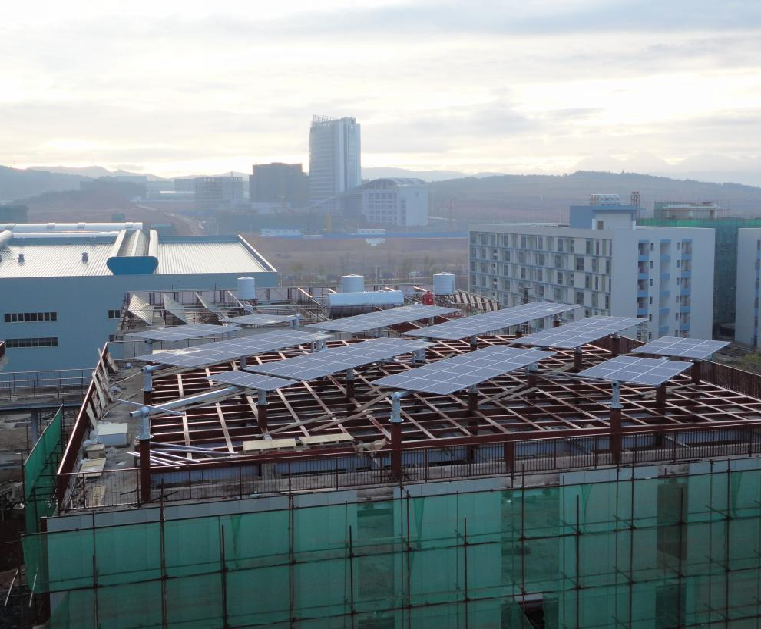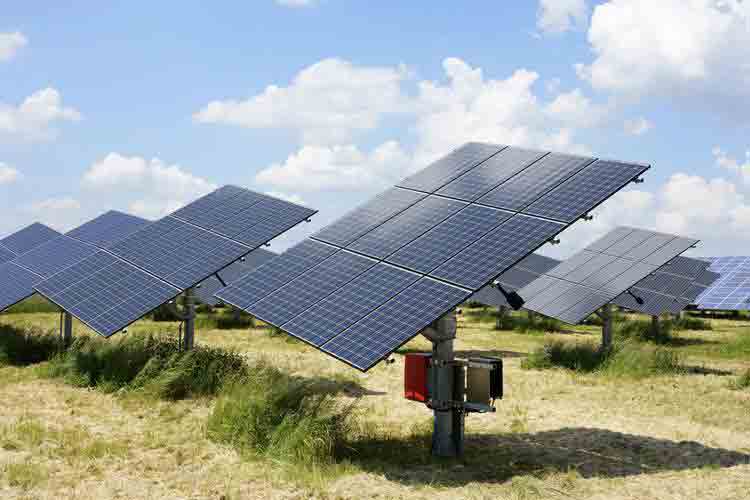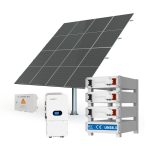
The Power of Solar Trackers: Enhancing Solar Energy Efficiency
In the rapidly evolving world of renewable energy,solar power has emerged as a leading solution to meet our growing energy demands while reducing our carbon footprint.One of the key technologies driving the efficiency of solar energy systems is the solar tracker.This innovative device plays a crucial role in maximizing the energy output of solar panels by ensuring they are always optimally positioned to capture sunlight.
A solar tracker is a device designed to orient solar panels,parabolic troughs,or other solar energy collectors towards the sun.By continuously adjusting the angle of the solar panels to face the sun directly,solar trackers can significantly increase the amount of solar energy captured and converted into electricity.This technology addresses the”cosine error,”which occurs when sunlight strikes a solar panel at an angle,reducing its efficiency.By minimizing this angle,solar trackers enhance energy production.
Solar trackers come in various types,each designed to meet specific needs and applications.The two main categories are single-axis and dual-axis trackers.
• Single-Axis Solar Trackers:These trackers follow the sun’s movement from east to west.They are commonly used in large-scale utility projects and can increase energy production by 25%to 35%.Single-axis trackers are cost-effective and suitable for installations with limited space.
• Dual-Axis Solar Trackers:These advanced trackers not only follow the sun’s east-to-west movement but also adjust for the sun’s north-to-south seasonal changes.Dual-axis trackers can boost energy production by up to 40%,making them ideal for residential and small commercial applications where space is limited.
Solar trackers can also be classified based on their operating mechanisms:
• Active Solar Trackers:These trackers use motors or hydraulic systems to adjust the position of the solar panels.They are powered by electricity and rely on sensors and algorithms to determine the optimal angle.Active trackers are highly precise and suitable for large-scale installations.
• Passive Solar Trackers:These trackers operate without an external power source.They use a low-boiling-point liquid that expands when exposed to sunlight,causing the panels to tilt towards the sun.Passive trackers are simpler and require less maintenance,making them ideal for smaller or remote installations.
The use of solar trackers offers several significant advantages:
• Increased Energy Production:By keeping solar panels perpendicular to the sun,trackers can increase energy output by up to 40%compared to fixed-tilt systems.
• Cost Savings:Although the initial investment for a solar tracker system is higher,the increased energy production can lead to long-term cost savings and a faster return on investment.
• Space Optimization:Solar trackers allow for more efficient use of land,as they can generate more electricity from the same area compared to fixed-tilt systems.
• Improved Performance:Trackers can adapt to changing weather conditions and seasonal variations,ensuring consistent energy production throughout the year.
Solar trackers are widely used in various applications,including:
• Utility-Scale Solar Farms:Large-scale solar installations benefit significantly from single-axis trackers,which maximize energy production and reduce the overall cost per watt.
• Residential and Commercial Roofs:Dual-axis trackers are ideal for rooftop installations,especially in areas with limited space.They can optimize energy production and meet the power needs of homes and small businesses.
• Agricultural and Industrial Sites:Solar trackers can be installed on farmland or industrial sites,providing a sustainable energy source while minimizing the impact on land use.
In conclusion,solar trackersare a game-changing technology in the solar energy sector.By optimizing the position of solar panels to capture the maximum amount of sunlight,these devices significantly enhance energy production and efficiency.Whether used in large-scale utility projects or smaller residential installations,solar trackers offer a powerful solution to meet our growing energy needs while reducing our reliance on fossil fuels.As the cost of solar technology continues to decrease,the adoption of solar trackers is expected to increase,driving further advancements in renewable energy solutions.






